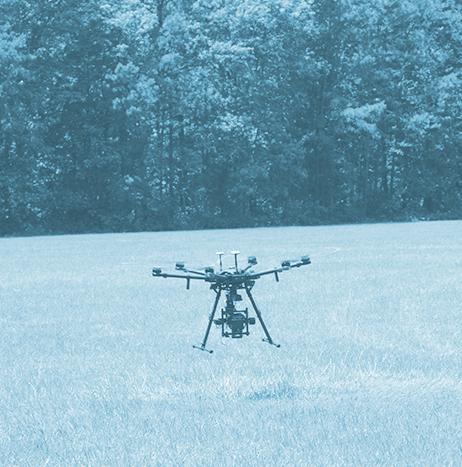The University of Tasmania’s AUV, nupiri muka, and its support crew recently returned home after a successful first deployment in Antarctica.
Located in Tasmania, Australia, the University of Tasmania says that nupiri muka is the first untethered Australian AUV to dive under an ice shelf, joining AUVs from the UK and Sweden as the only ones in the world with this capability.
With support from the Australian Antarctic Program, nupiri muka was successfully deployed under the Sørsdal Glacier ice shelf during the summer Antarctic season. The AUV was funded by the Australian Research Council (ARC) through the Antarctic Gateway Partnership.
Exploration
Exploration
Milrem Robotics' Multiscope UGV used to determine condition of pillars in mine
Milrem Robotics has announced that an energy company in Estonia called Enefit used its Multiscope UGV to determine the condition of the pillars in a mine in which mining ended ten years ago.
Equipped with 3D lidars, the Multiscope UGV was used in the Estonia Mine in closed underground locations. People are no longer allowed to enter these areas being that the anchor structure used to support the ceiling is being removed following the end of mining operations.
“An unmanned vehicle is an excellent solution for conducting surveys in an area which may be unsafe or prohibited for people to enter,” says Veljo Aleksandrov, development project director at Enefit.

Ocean drone and sensor companies merge to form Sofar Ocean Technologies
Ocean data startup Spoondrift and underwater drone developer OpenROV have announced that they have merged to form Sofar Ocean Technologies.
Sofar brings together two teams who have experience developing and scaling tools for distributed ocean sensing and monitoring, as the newly formed company notes that the world's oceans remain “largely unexplored, misunderstood, and tragically under-utilized.”

Ocean Infinity uses AUVs to locate missing ARA San Juan
Just over a year after the ARA San Juan went missing, Ocean Infinity found the Argentine Navy submarine on Nov. 17 using its AUVs.
According to Ocean Infinity, the submarine was found in a ravine in 920 meters of water, approximately 600 kilometers east of Comodoro Rivadavia in the Atlantic Ocean.
“Our thoughts are with the many families affected by this terrible tragedy. We sincerely hope that locating the resting place of the ARA San Juan will be of some comfort to them at what must be a profoundly difficult time,” Ocean Infinity’s CEO Oliver Plunkett said after the ARA San Juan was found.

Australian safety authority to use ROVs to search for containers lost from ship
On Nov. 8, the Australian Maritime Safety Authority (AMSA) signed a contract to begin operating remotely operated underwater vehicles, or ROVs, to investigate the containers lost from the YM Efficiency container ship.
The ship lost dozens of cargo containers in the summer due to a massive storm. In July, the ship’s insurer, Aus Ship, and operator, Yang Ming, conducted survey operations in the area and located approximately 37 containers, but there have been delays in further search operations as a result of weather and sea conditions. An analysis by AMSA of the completed surveys indicates that there are as many as 42 containers still missing.

Universal Robots hires more than 20 Rethink Robotics staff members
Universal Robots (UR) has hired more than 20 Rethink Robotics staff members, merging its Boston office with Rethink’s former headquarters in Boston’s seaport area “with immediate effect.”
UR says that Rethink’s personnel brings “extensive” collaborative robotics experience in engineering, product development, and customer applications. This experience, combined with UR’s expertise, will help UR continue to develop new and innovative collaborative robotics platforms.

Black Swift Technologies to develop UAS to perform upper atmospheric observations of Venus
Black Swift Technologies (BST) has been awarded a NASA contract to develop a UAS to perform “upper atmospheric observations” of the planet Venus.
BST is proposing a “planetary aerial vehicle based on dynamic soaring,” which the company says is a “proven method to extract energy from atmospheric shear that has propelled the fastest small-scale aircraft in the world,” and provided the energy needed for “long-endurance low-level flights of birds across oceans.”

AUVSI Launches Tampa Satellite Chapter
FOR IMMEDIATE RELEASE: Jan. 22, 2018
Contact: Tom McMahon, tmcmahon@auvsi.org, (571) 255-7786
Space Coast Subchapter Launch and Drone Meetup
If you live any where near central Florida don’t miss out and get ready for the launch of the AUVSI Space Coast Subchapter. On Nov 15th @ Groundswell Startups the Space Coast will never be the same. Social hour begins 5:30 P.M. Talks from industry pioneers @ 6:00 P.M. REGISTER NOW
San Diego State University launches Drone Lab
San Diego State University (SDSU) has launched its new Center for Unmanned Systems Technologies—also known as the Drone Lab—which will be used to “capitalize on its potential for crowd protection, surveillance and research while heading off potential dangers.”
Right now, SDSU students can fly their UAS on campus at two designated “fly zones,” but the school notes that it is a safety hazard to have too many UAS flying around campus, especially by pilots that are inexperienced.


